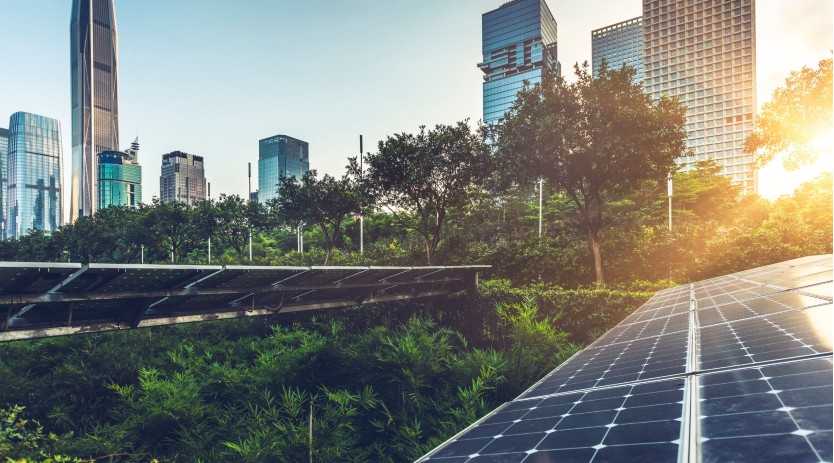Copper industry evolving in line with ‘Make in India’
June 21, 2016 1:51 pm
Even with two back to back bad monsoons the economy has been fairly well insulated from any downturn, encouraging investment.Sanjeev Ranjan, Managing Director, ICA India
Increasing business growth in IndiaAs reported by the World Bank, India now ranks 130 out of 189 countries in the ease of doing business, moving up 12 places from the last year. ICA India applauds the government on its hard work and effort to project India as the new driver for growth in Asia. Just recently, the Indian government has eased FDI norms in 15 major sectors. According to Department of Industrial Policy and Promotion (DIPP) this has already triggered a jump of 13 per cent in foreign direct investment (FDI) this quarter. Along with this the recent reforms in real estate and changes expected in GST Bill have all contributed to creating a positive business environment. The government has focused on the infrastructure sector, with the centre’s UDAY (Ujwal DISCOM Assurance Yojana) scheme to address the growing power woes and rising debt of state utilities, Deen Dayal Upadhyaya Rural Electrification project, government’s imminent reforms in power and infrastructure, all steps in the right direction. With Government’s ambitious plan to modernise railways through a rejuvenated public private partnership (PPP) model it will all collectively contribute to encouraging more business growth in India.
Even with two back to back bad monsoons the economy has been fairly well insulated from any downturn, encouraging investment. Large foreign sovereign debt funds from Japan and Saudi Arabia continue to show its commitment and invest in India. ICA India is hopeful with continuous improvement India’s ranking in World Bank’s list of ease of doing business will only get better.
Evolving in line with ‘Make in India’India has all the ingredients that can help boost copper demand; given its billion plus predominately young population, rapid urbanisation, huge infrastructure projects, investment in smart cities, proposed industrial corridors, modernisation of ports, airports, rail and electricity grids; this with ever increasing aspiring middle class with fuel consumption of copper centric product such as air conditioners, cars, consumer appliances and smart homes. However, policy bottlenecks have been India’s bane for achieving higher growth targets. The current central government has shown promise in addressing these bottlenecks and it will continue to take steps to boost infrastructure development and industrialisation which will help copper growth in the country. However, this can only get accelerated if industry also steps forward and a favourable PPP model is implemented.
The performance of the copper industry is highly dependent on the performance of sectors like power, construction, telecom, and automobile, and on demand for products like power cables, transformers, generators, radiators, and other ancillary components. Hence, its growth is closely linked to the country’s economic and industrial growth.
Of the recent sectors identified for the government, major sectors to impact copper growth are automobile, defence, construction, railways and power.
Building construction is one of the largest consumers of copper mainly in form of building wire. Government of India aims to add 40 million rural and 20 million urban houses under its Housing for All by 2022 scheme. Under the scheme each of these houses would have 24/7 electricity, drinking water supply, toilet and road connectivity. As per some estimated about 3 billion square feet area of real estate needs to be added annually to achieve this target. This will boost the use of copper wire in new buildings.
The government’s proposal to set up five new 4,000 MW ultra mega power projects, entailing investments of around Rs 1 lakh crore, is a big positive for the copper industry. Further, rural electrification to improve power supplies, complete electrification of remaining 20,000 villages by 2020, and increase in clean energy targets to 175 GW by 2020 would boost use of copper in power cables and transformers. As per some rough estimate around 160,000 MV of transformers would be required annually. Announcement of ‘UDAY’ scheme by the government of India on debt restructuring will be used effectively by states to strengthen their infrastructure.
The defence production policy encourages indigenous manufacture of defence equipment and preference is given to ‘Buy (Indian)’ and ‘Buy and Make (Indian)’ over ‘Buy (Global)’. Easing up of FDI norms encourage foreign player participation and help Indian industry achieve this goal.
Consolidation and improvement in operations of railways by bringing in better technology will also be a big positive for the copper industry.
Cookie Consent
We use cookies to personalize your experience. By continuing to visit this website you agree to our Terms & Conditions, Privacy Policy and Cookie Policy.
















